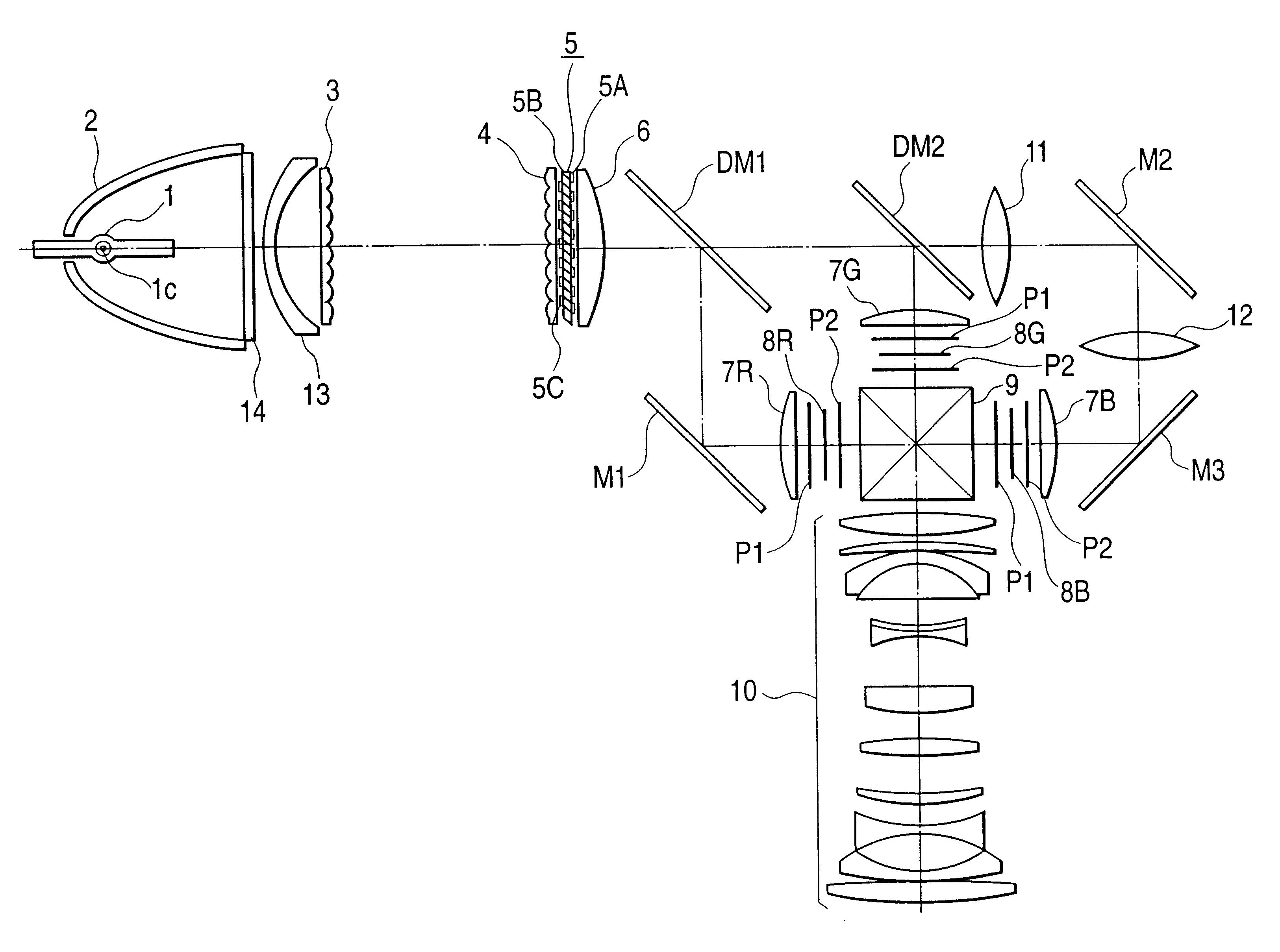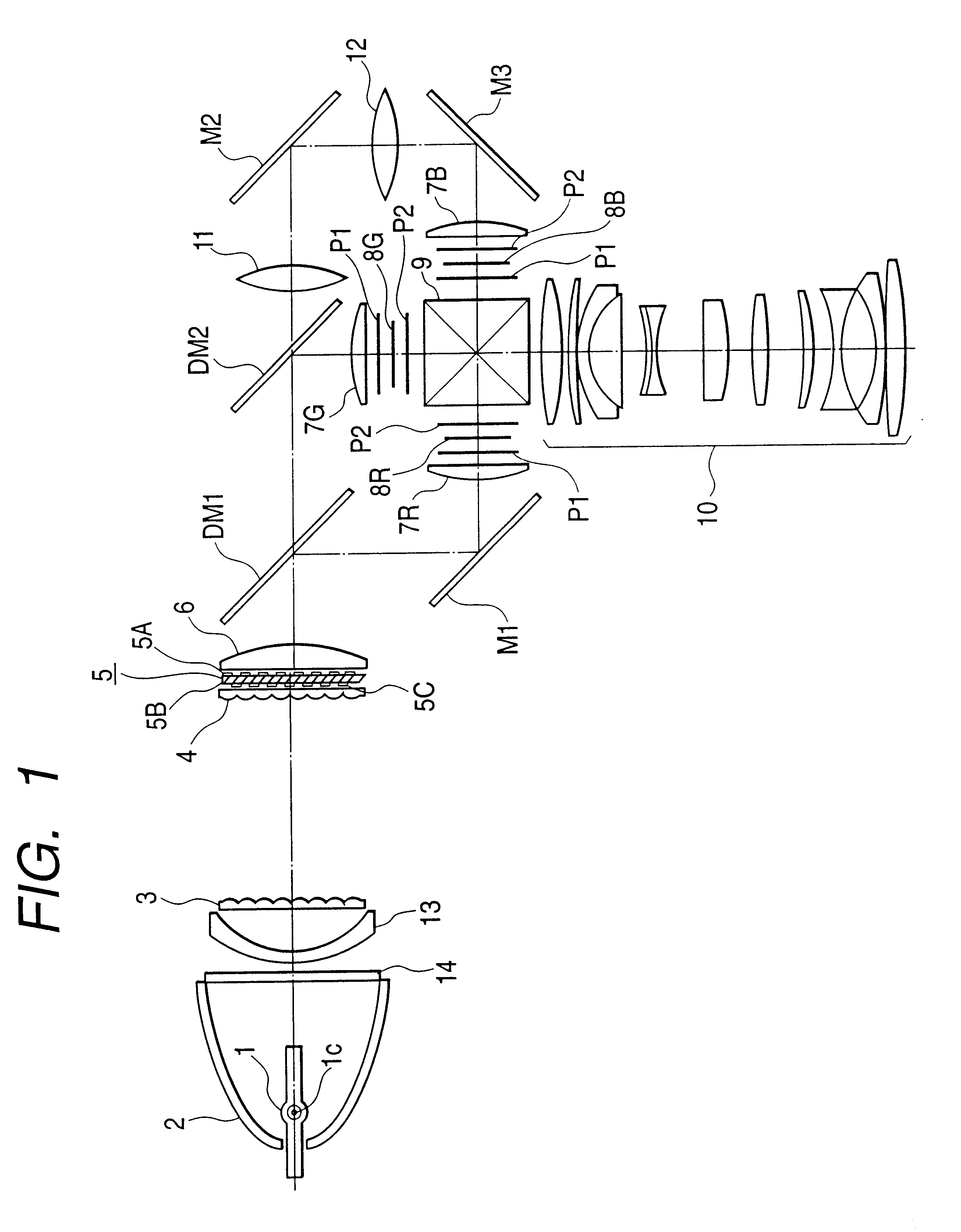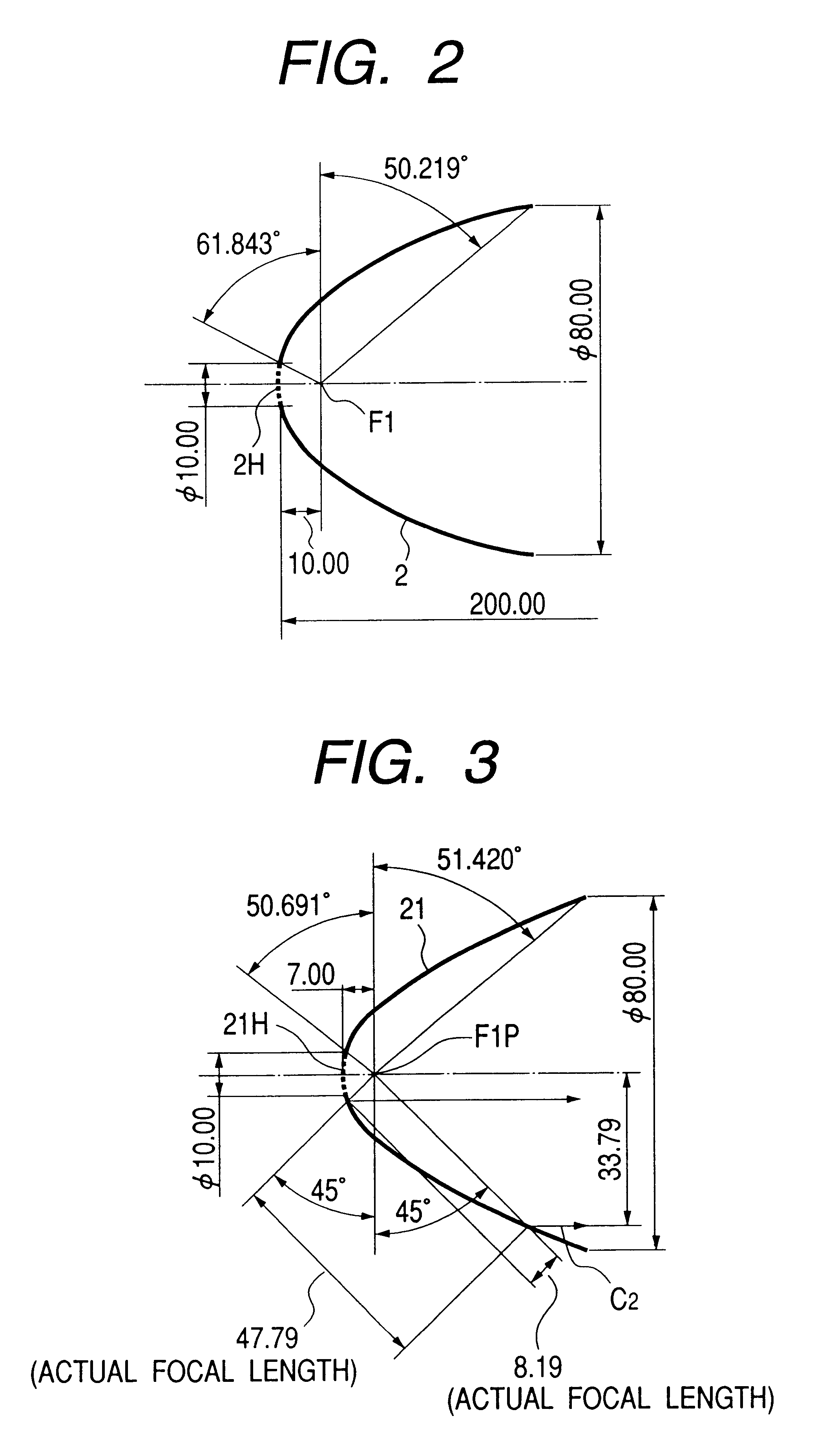Illuminating apparatus
a technology of illumination apparatus and illumination efficiency, which is applied in the direction of projectors, color television details, instruments, etc., can solve the problems of reducing illumination efficiency, reducing illumination efficiency, and not increasing illumination efficiency so much
- Summary
- Abstract
- Description
- Claims
- Application Information
AI Technical Summary
Problems solved by technology
Method used
Image
Examples
numerical example 2 (corresponding to the light source section of fig.6)
Numerical Example 2 (corresponding to the light source section of FIG. 6)
Ellipsoidal mirror F1: 10 mm, F2: 200 mm
Concave lens R1: 95.2 mm, R2: 40 mm, D: 2 mm, K: aspherical coefficient of R2 (K=-0.5), N: 1.51633
Distance between the vertex of the reflecting surface of the ellipsoidal mirror and the concave lens R1: 72 mm
numerical example 3 (corresponding to the light source section of fig.7)
Numerical Example 3 (corresponding to the light source section of FIG. 7)
Ellipsoidal mirror F1: 10 mm, F2: 200 mm
Concave lens R1: 71 mm, R2: 35 mm, D: 2 mm, K: aspherical coefficient of R2 (K=-0.5), N: 1.51633
Distance between the vertex of the reflecting surface of the ellipsoidal mirror and the concave lens R1: 72 mm
numerical example 4 (corresponding to the light source section of fig.8)
Numerical Example 4 (corresponding to the light source section of FIG. 8)
Ellipsoidal mirror F1: 10 mm, F2: 180 mm
Concave lens R1: 71 mm, R2: 35 mm, D: 2 mm, K: aspherical coefficient of R2 (K=-0.5), N: 1.51633
Distance between the vertex of the reflecting surface of the ellipsoidal mirror and the concave lens R1: 52 mm
PUM
| Property | Measurement | Unit |
|---|---|---|
| size | aaaaa | aaaaa |
| diameter | aaaaa | aaaaa |
| diameter | aaaaa | aaaaa |
Abstract
Description
Claims
Application Information
 Login to View More
Login to View More - R&D
- Intellectual Property
- Life Sciences
- Materials
- Tech Scout
- Unparalleled Data Quality
- Higher Quality Content
- 60% Fewer Hallucinations
Browse by: Latest US Patents, China's latest patents, Technical Efficacy Thesaurus, Application Domain, Technology Topic, Popular Technical Reports.
© 2025 PatSnap. All rights reserved.Legal|Privacy policy|Modern Slavery Act Transparency Statement|Sitemap|About US| Contact US: help@patsnap.com



